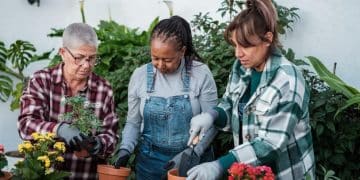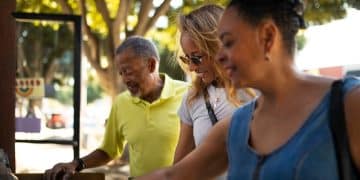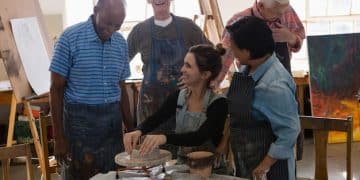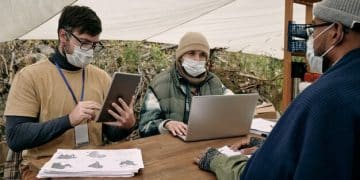Organize a Community Health Fair: Your Step-by-Step Guide
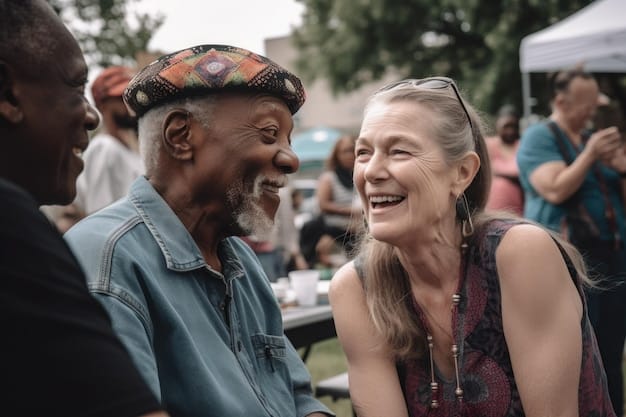
Organizing a community health fair involves careful planning, securing resources, engaging volunteers, and promoting the event to provide vital health access and education to the community.
Want to make a real difference in your community’s health? Let’s explore how to organize a community health fair and provide access to vital resources, creating a healthier and more informed neighborhood, one step at a time.
Starting Your Community Health Fair: Initial Planning
Organizing a successful community health fair starts long before the day of the event. It requires meticulous planning, thoughtful resource allocation, and a dedicated team committed to improving community well-being. The initial phase is foundational, setting the stage for everything that follows.
Let’s dive into the crucial first steps to ensure your health fair makes a real difference.
Define the Scope and Objectives
Before you start booking vendors or designing flyers, clearly define the scope and objectives of your health fair. What specific health needs are you addressing in your community? Are you focusing on preventative care, chronic disease management, or general health awareness?
Your objectives should be specific, measurable, achievable, relevant, and time-bound (SMART). For example, an objective might be to provide free blood pressure screenings to 100 residents and distribute 200 educational pamphlets on diabetes prevention.
Form a Planning Committee
No one person can organize a health fair alone. Assemble a planning committee comprised of passionate individuals representing different community organizations, local businesses, healthcare providers, and resident volunteers. Diversity in your committee ensures a broader perspective and increased community buy-in.
- Recruit members with specific skills, such as event planning, marketing, fundraising, and healthcare expertise.
- Assign clear roles and responsibilities to each member to ensure accountability and efficient workflow.
- Hold regular meetings to discuss progress, address challenges, and make collaborative decisions.
In conclusion, the initial planning phase sets the foundation for a successful community health fair. By clearly defining the scope and objectives and forming a dedicated planning committee, you’ll be well-equipped to tackle the subsequent steps and create a valuable event for your community.
Securing Resources and Funding
A well-planned health fair needs money and resources. This involves finding grants, sponsorship, and community aid to make certain the event is successful and can help people.
Let’s discuss how to secure the funding and resources necessary to make your community health fair a reality.
Identify Potential Funding Sources
Start by identifying potential funding sources, including local businesses, hospitals, healthcare organizations, community foundations, and government agencies. Research grant opportunities specifically designed for community health initiatives. Many organizations offer funding to support health education and preventative care efforts.
Consider crowdfunding and online donation platforms to tap into broader community support. Create a compelling fundraising campaign that highlights the impact of your health fair on the community’s well-being. Host fundraising events, such as benefit concerts, fun runs, or silent auctions, to raise money and increase community engagement.
Cultivate Sponsorships and Partnerships
Sponsorships offer a mutually beneficial way to secure funding and resources. Offer sponsors prominent visibility at the health fair in exchange for their financial or in-kind support. Create sponsorship packages with varying levels of benefits to attract a diverse range of sponsors.
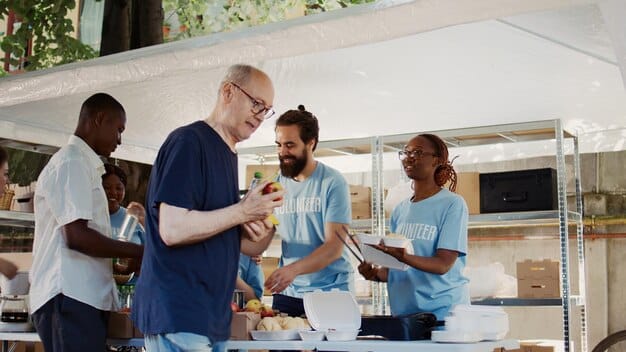
- Partner with local businesses to secure donations of food, beverages, supplies, and promotional materials.
- Collaborate with healthcare providers to offer free health screenings, vaccinations, and educational workshops.
- Engage community organizations to provide volunteer support and promote the health fair to their members.
Securing resources and funding is a critical step in organizing a community health fair. By identifying potential funding sources, cultivating sponsorships and partnerships, and creating a detailed budget, you can ensure that your health fair has the financial support it needs to succeed.
Engaging Volunteers and Community Partners
The heart and soul of any successful health fair is the people who come together to make it happen. Volunteers and community partners are the backbone, bringing enthusiasm, expertise, and vital resources to the table.
Let’s explore strategies for recruiting and engaging volunteers and fostering strong partnerships with community organizations.
Recruit and Train Volunteers
Recruit a diverse team of volunteers with varied skills and backgrounds. Reach out to local universities, colleges, high schools, and community organizations to find enthusiastic individuals willing to contribute their time and expertise. Clearly define volunteer roles and responsibilities to ensure everyone knows what is expected of them.
Provide comprehensive training to equip volunteers with the knowledge and skills they need to succeed. Cover topics such as event logistics, customer service, health information, and emergency procedures. Conduct background checks on volunteers who will be working directly with children or vulnerable adults.
Foster Collaboration with Community Organizations
Partner with local community organizations to expand your reach and provide a wider range of services at the health fair. Collaborate with non-profits, faith-based organizations, and government agencies to offer resources related to housing, food security, mental health, and other social determinants of health.
Invite community partners to exhibit at the health fair, providing them with a platform to share their programs and services with attendees. Promote their participation in your marketing materials and on social media to increase their visibility. Establish clear communication channels with community partners to coordinate efforts and address any issues that may arise.
Involving volunteers and fostering collaboration with community organizations are crucial for creating a vibrant and impactful health fair. By recruiting a dedicated team of volunteers and partnering with like-minded organizations, you can maximize your reach and provide comprehensive services to your community.
Planning Health Screenings and Educational Workshops
Health screenings and educational workshops are cornerstone offerings, providing direct access to vital health information and preventative services. Choosing relevant screenings and planning engaging workshops are vital.
Let’s explore how to plan relevant health screenings and engaging educational workshops for your community health fair.
Select Relevant Health Screenings
Choose health screenings based on the specific health needs of your community. Consider offering screenings for blood pressure, cholesterol, glucose, vision, hearing, and dental health. Provide information about the purpose of each screening, the potential risks and benefits, and follow-up care options.
Partner with healthcare providers to conduct the screenings and interpret the results. Ensure that all screenings are conducted in a safe, private, and confidential manner. Have a system in place to refer individuals with abnormal results to appropriate medical professionals for further evaluation and treatment.
Design Engaging Educational Workshops
Design educational workshops that address relevant health topics and provide practical tips for improving health and well-being. Consider offering workshops on nutrition, exercise, stress management, smoking cessation, and disease prevention. Use interactive teaching methods, such as demonstrations, group discussions, and hands-on activities, to engage participants.
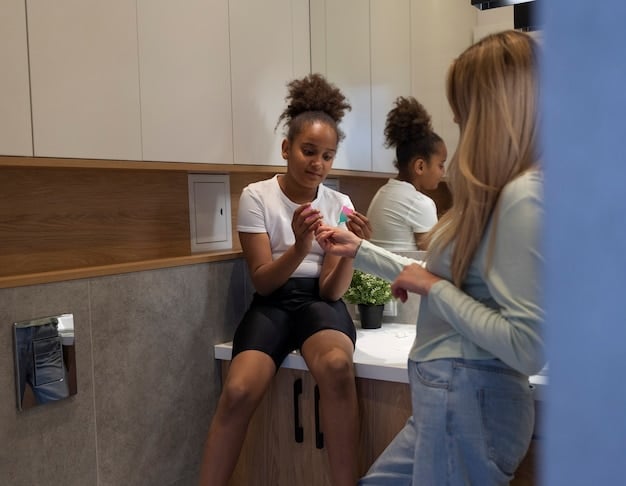
- Provide free educational materials, such as pamphlets, brochures, and fact sheets, to reinforce the key messages of the workshops.
- Invite guest speakers with expertise in relevant health topics to present at the workshops.
- Offer workshops in multiple languages to ensure accessibility for diverse populations.
Planning health screenings and educational workshops that are relevant and engaging is vital for your health fair. You will equip your neighbors with the tools and resources they need to take control of their health by selecting appropriate screenings and planning engaging seminars.
Promoting Your Event
Attracting attendees to your health fair is just as critical as organizing it. Effective promotion helps ensure that the community is aware of the event and motivated to participate.
Let’s dive into essential tips for marketing to boost participation.
Develop a Marketing Strategy
Develop a comprehensive marketing strategy to reach your target audience. Identify the most effective channels for communicating with community members, such as local newspapers, radio stations, community bulletin boards, social media, and email lists. Create a consistent brand message and design visually appealing marketing materials.
Utilize social media to promote your health fair and engage with potential attendees. Create a Facebook event page, share updates on Twitter, and post photos on Instagram to build excitement and generate buzz. Run targeted social media ads to reach specific demographic groups within your community.
Engage Local Media and Public Relations
Engage local media outlets to promote your health fair and generate publicity. Send press releases to newspapers, radio stations, and television stations, highlighting the key features of the event and its impact on the community. Invite reporters to attend the health fair and interview organizers, volunteers, and attendees.
Develop relationships with local influencers and bloggers to help promote your health fair to their followers. Offer them exclusive access to the event or provide them with content to share on their platforms. Consider hosting a press conference or media event to generate additional media coverage.
Promoting your event requires a multifaceted approach that combines traditional marketing methods with digital strategies and media engagement. By developing a strong marketing strategy, engaging local media, and leveraging community networks, you can ensure that your health fair reaches a wide audience and attracts a large turnout.
Managing Logistics and On-site Activities
The day of your health fair is a culmination of months of hard work and preparation. Managing logistics and on-site activities effectively is crucial to ensure a smooth and successful event.
Let’s walk through essential steps for on-the-ground management.
Create a Detailed Event Timeline
Develop a comprehensive event timeline that outlines all key activities and milestones leading up to and during the health fair. Assign specific tasks to volunteers and staff members and set deadlines for completion. Regularly review the timeline to track progress and make adjustments as needed.
Create a detailed floor plan of the event venue, indicating the location of each booth, screening area, workshop room, and restroom. Ensure that there is adequate space for attendees to move around comfortably and safely. Clearly mark entrances, exits, and emergency exits.
Ensure Accessibility and Safety
Make sure that you offer services to people with physical limitations, language obstacles, and other significant requirements. Ensure the locations are ADA-accessible, with ramps, wheelchair-accessible restrooms, and designated parking spaces.
- Provide translation services or bilingual staff to communicate with non-English speakers.
- Offer large-print materials and audio descriptions for individuals with visual impairments.
- Have first aid personnel and emergency medical equipment on-site to respond to any medical emergencies.
Managing logistics and on-site activities requires meticulous planning, effective communication, and attention to detail. By creating a detailed event timeline, ensuring accessibility and safety, and providing excellent customer service, you can create a positive and memorable experience for all attendees.
| Key Point | Brief Description |
|---|---|
| 🗓️ Initial Planning | Define scope, objectives, and form a planning committee. |
| 🤝 Community Engagement | Recruit volunteers and partner with community organizations. |
| 🩺 Health Services | Offer relevant health screenings and educational workshops. |
| 📣 Promotion | Develop a marketing strategy to publicize the event. |
Frequently Asked Questions
▼
The main goal is to provide access to vital health resources, education, and screenings to improve community health and well-being.
▼
It offers free health screenings, educational workshops, and information on disease prevention, promoting healthier lifestyles and early detection of potential issues.
▼
Common resources include free health screenings, educational pamphlets, demonstrations, consultations with healthcare professionals, and information on local health services.
▼
Contact the organizers or local community centers to inquire about volunteer opportunities, typically involving tasks like registration, assisting with screenings, and distributing information.
▼
Start by forming a planning committee, securing funding, engaging community partners, planning health screenings, promoting the event, and managing logistics for a successful fair.
Conclusion
Organizing a community health fair is a significant undertaking that requires careful planning, dedicated volunteers, and strong community partnerships. By providing access to vital health resources, education, and screenings, you can positively impact the health and well-being of your community.

